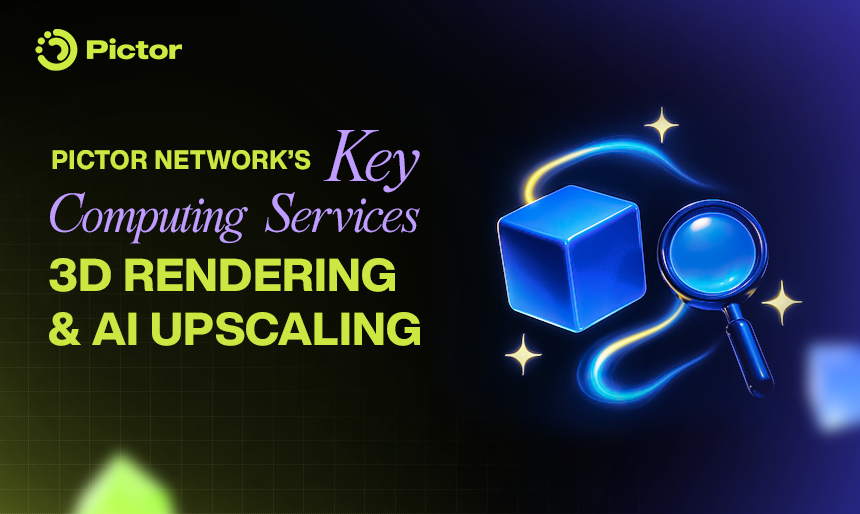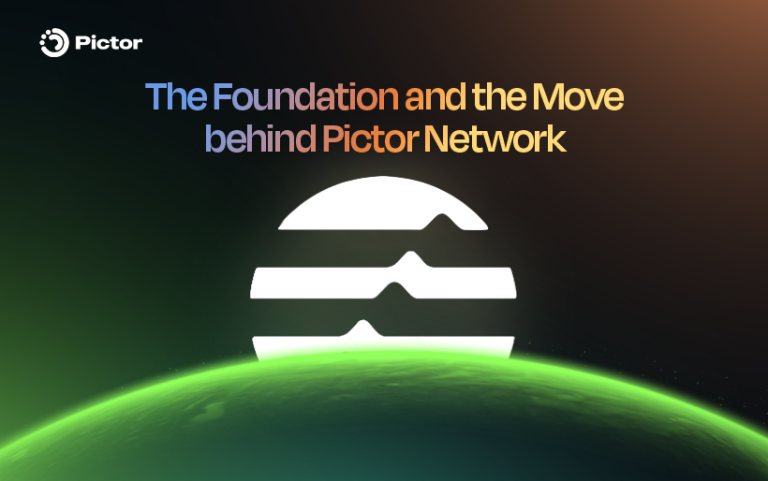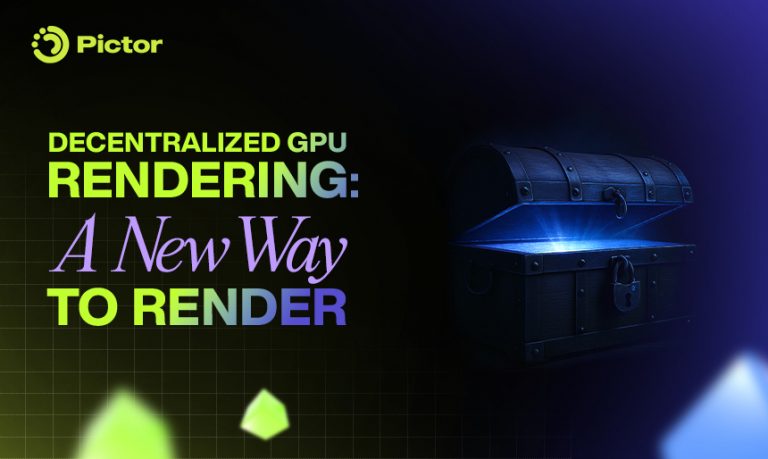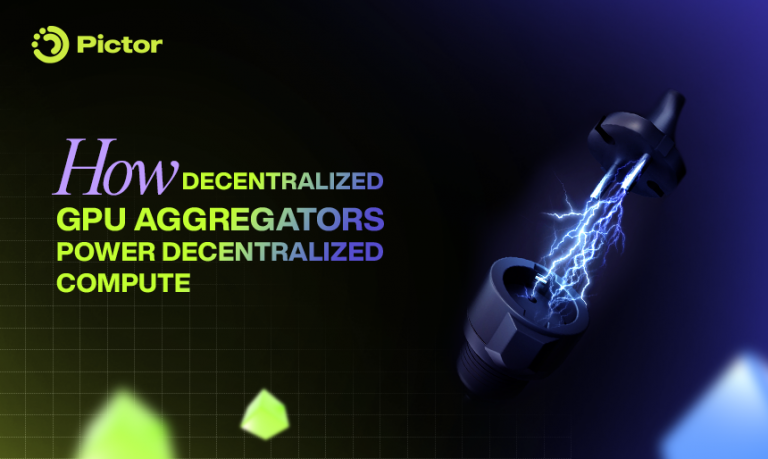“Every decentralized network needs a starting point.
At Pictor Network, we didn’t chase trends, we chose the use cases where compute friction is real, and where creators need us most.”
The Future Runs on GPU, But Access Remains a Roadblock
The future of digital creation is undeniably GPU-powered. From photorealistic 3D worlds to AI-enhanced imagery, GPU power underpins everything. It’s the silent engine behind design, animation, simulation, and next-gen content creation.
Yet for most of the people pushing that frontier – indie artists, AI builders, small studios – compute remains frustratingly out of reach.
High costs. Long queues. Opaque pricing. Centralized control.
Pictor Network was created to flip that dynamic. By aggregating idle GPUs around the world into a decentralized, verifiable compute layer, we offer creators access to the power they need without the barriers they’ve come to expect. That’s why from day one, we designed Pictor Network not just as a network but as an answer to the most immediate GPU bottlenecks – starting with 3D rendering and AI upscaling.
Choosing the Right Starting Point
When designing a decentralized compute network, it’s tempting to promise it can do everything, from AI training to complex simulations. But a scalable network starts with the right workloads:
Those that are technically feasible, economically impactful, and clearly underserved.
We didn’t just ask, “What’s popular?”
We asked, “Where is the pain the most real?”
And just as importantly, “Where can decentralization actually make a difference today?”
That led us to two services:
- 3D Rendering, where creative pipelines are bottlenecked by cost and speed.
- AI Upscaling, where visual enhancement remains exclusive to those with local GPUs or expensive SaaS tools.
Let’s explore why these two make sense, not just for us but for the creators who depend on them.
3D Rendering: Unblocking the Creative Pipeline
The Bottleneck That Stalls Visual Production
3D rendering is where ideas become images. From animated films to architectural mockups, it’s the final translation of model, scene, lighting, and texture into pixels. For creators, this is the final but most demanding stage of production. And it’s where many hit their wall.
A short animation may take thousands of frames to render. A high-res environment for a game or metaverse experience can require hours per scene. And while large studios have render farms, most artists rely on:
- Personal GPUs that choke under heavy jobs
- Or centralized services that are costly, slow, and opaque
What should be a seamless step becomes a production bottleneck.
How Pictor Network Rethinks Rendering with Decentralization
At Pictor Network, we treat rendering not as one big job but as a network-friendly computation pattern.
Each frame, layer, or segment of a render can be dispatched independently. That means tasks are naturally parallelizable and ideal for distribution across a decentralized GPU network.
Decentralization doesn’t just make rendering trustless, it makes it more accessible, transparent, and fair.
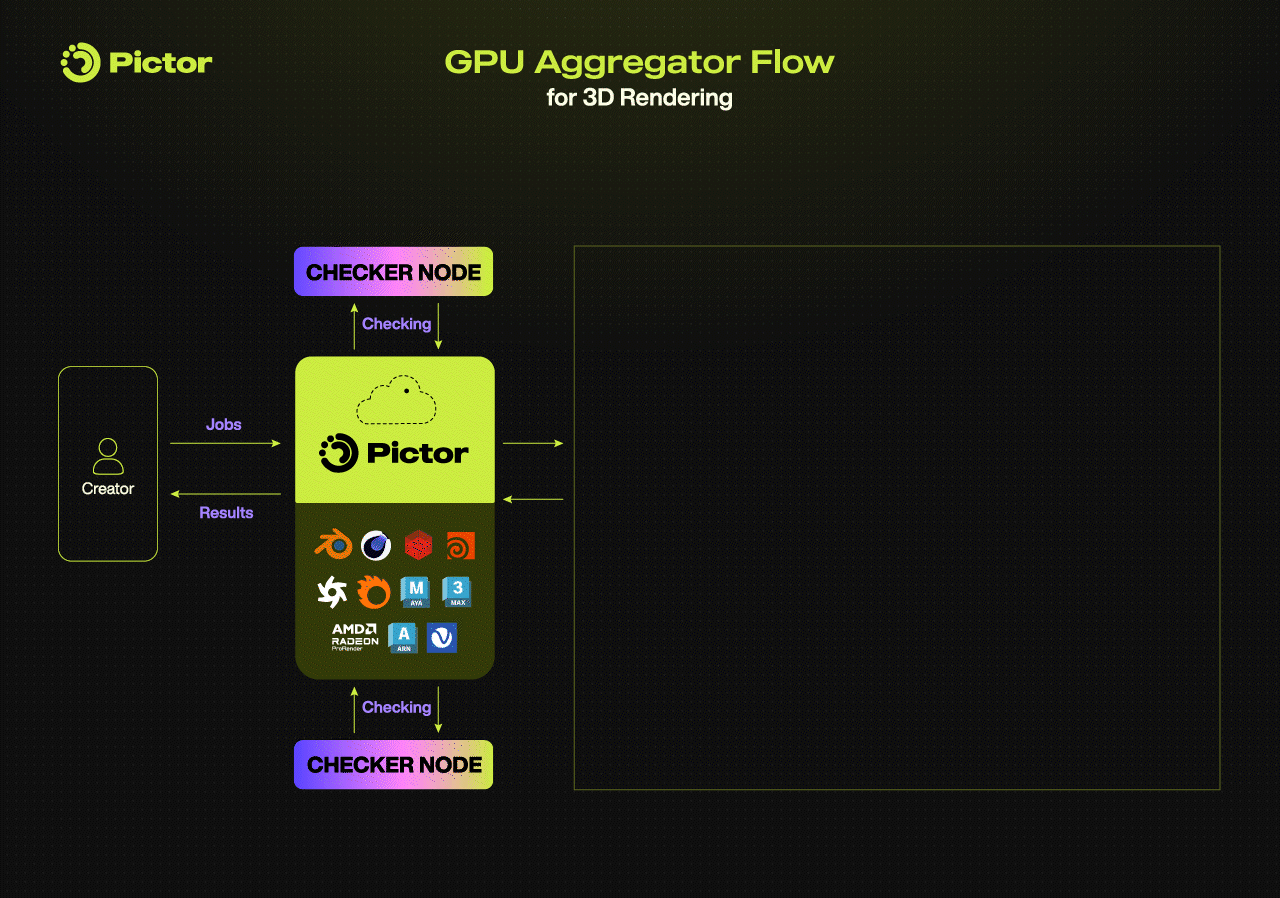
Instead of relying on a single provider, rendering tasks are distributed across open GPU nodes, governed by smart contracts, stored by decentralized storage, and validated by ZKP without needing to expose your source files.
We use metadata-based validation, matching hashes, expected render time, resolution, and job parameters, all checked by Checker Nodes and confirmed on-chain.
That turns rendering into something it’s never been before:
- Transparent
- Scalable
- Verifiable
- And accessible
Real Impact for Real Creators
Whether you’re a solo Blender artist rendering a 1200-frame short film, a 3D generalist exporting visuals for Unreal Engine, or a small studio trying to keep up with client deadlines, rendering is always the part you budget for last, but need to finish first.
With Pictor Network:
- Your rendering tasks are broken down and broadcast to idle GPU nodes around the world
- Jobs are executed in parallel
- Verified through transparent logic
- And stored directly on decentralized storage
No more queues. No more gatekeeping. Just rendering that scale with you.
AI Upscaling: Enhancing What’s Already There
A Smarter Way to Work With Non-Final Renders
In most real-world workflows, creators rarely render everything at full resolution right away. It’s more practical and faster to render at a lower resolution, especially during production. Whether you’re creating animation, generative art, game assets, or marketing visuals, the early stages are all about speed, iteration, and previewing.
AI upscaling fills the gap between these fast drafts and the high-res outputs that stakeholders expect. Instead of going back to re-render, creators can enhance clarity and resolution using deep learning models, giving near-final quality in a fraction of the time. It’s not a replacement for final rendering, but a way to make earlier outputs sharper, cleaner, and easier to evaluate or share.
Why It’s Needed, But Rarely Seamless
Despite its value, AI upscaling still sits behind several friction points. Running it locally means setting up models, configuring environments, and depending on a GPU that’s often already in use for other tasks. SaaS tools help, but their pricing models, output limits, and lack of flexibility make them impractical for creators working at scale or in fast-moving teams.
So, even when the tech is available, it isn’t always accessible. Many creators find themselves skipping this step, not because they don’t need it, but because the setup doesn’t match the pace of production.
What Pictor Network Makes Possible
Pictor Network treats AI upscaling as a distributed GPU job. The process is as simple as uploading a batch of images, selecting a model, and letting decentralized GPU nodes handle the work. Jobs are verified on-chain through deterministic outputs, and results are returned with zero overhead to the creator.
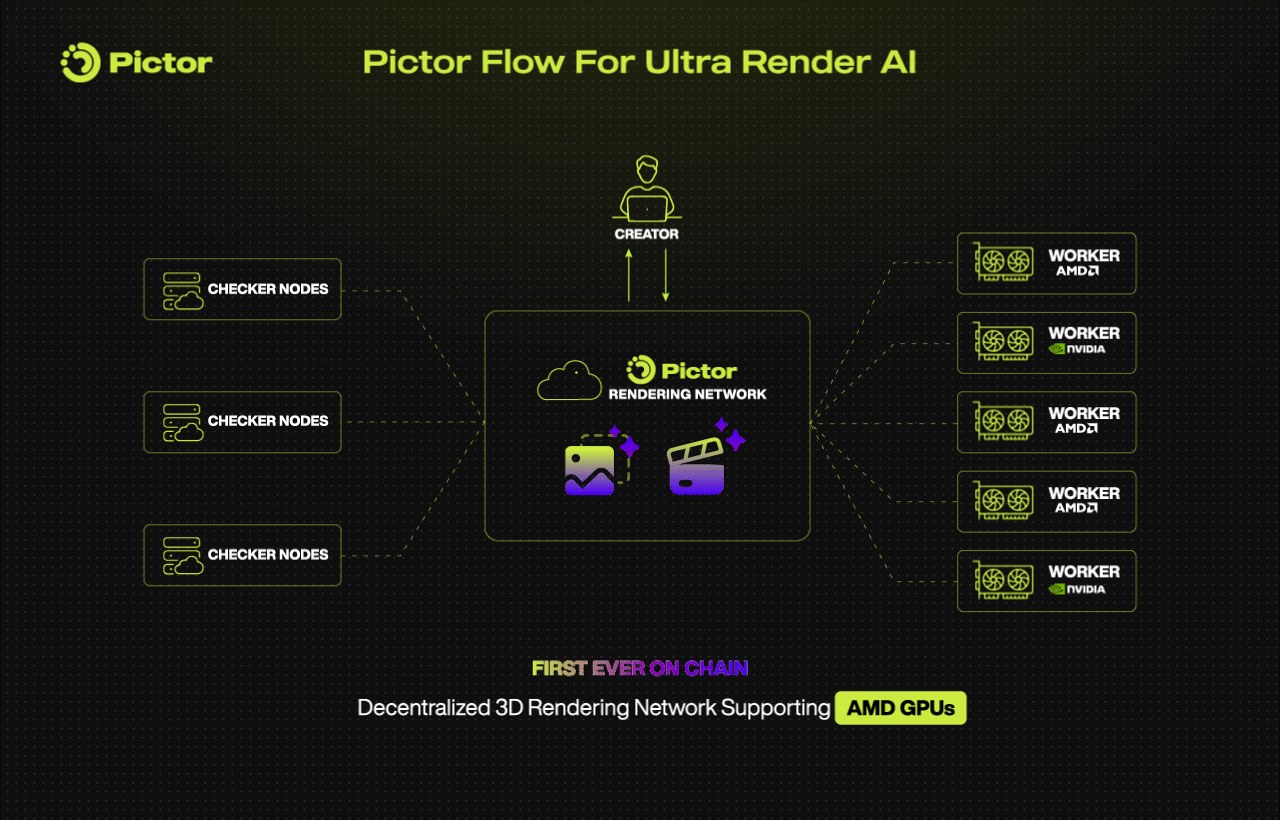
But the real shift is in what decentralization unlocks: a way to run AI models at scale, without cloud lock-in, and with full transparency on execution. There’s no pricing black box, no account gating, no arbitrary limits, just fast, verifiable compute, accessible from any wallet. For creators who want to enhance work-in-progress visuals, generate client-facing previews, or speed up iterative feedback, Pictor Network makes AI upscaling simple, scalable, and decentralized by default.
More Than Services: This Is Our Launchpad
3D Rendering and AI Upscaling aren’t just the first two services on Pictor Network. They’re the foundation we’ve chosen to prove how decentralized compute can work at scale, for real users, solving real creative bottlenecks.
They give us more than just traction.
They let us validate smart contract logic, benchmark GPU node performance, refine job verification through Checker Nodes, and activate token-based incentives that align contributors across the network.
They also help us integrate decentralized storage solutions, ensuring outputs are accessible, ownable, and permanent.
But above all, these services connect Pictor Network to where creators already are.
Before we move on to heavier GPU workloads: AI inference, Simulation, AI model training, or streaming – we’re starting with what’s immediate, impactful, and familiar. That’s how we build not just infrastructure but trust.
📣 Join the Build
Whether you’re rendering a short film, enhancing design assets, or putting unused GPUs to work, Pictor Network is here to make compute open, transparent, and creator-first.
- 🌐 Website: https://pictor.network/
- 🐦 X: https://x.com/pictor_network
- 💬 Telegram Community: https://t.me/pictor_community
- 📢 Telegram Channel: https://t.me/pictor_channel
- 🎮 Discord: https://discord.com/invite/gpcXrp3tvh
- 💼 LinkedIn: https://www.linkedin.com/company/pictor-network
- ▶️ YouTube: http://www.youtube.com/@Pictor_network
We’re building the future of decentralized GPU – one frame at a time.

